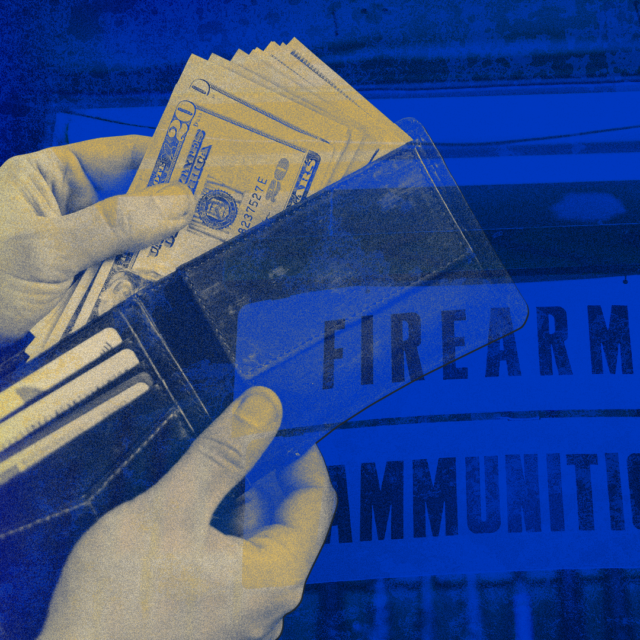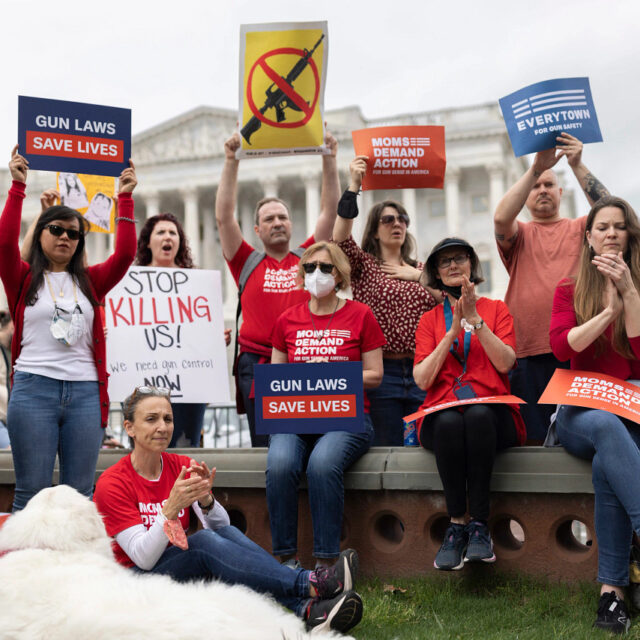The State Department should act urgently to reverse the Trump Administration’s regulations that removed critical controls on firearm exports — before an April 27, 2021 decision from the Ninth Circuit takes effect. That decision, which could take effect within weeks, would potentially allow gun rights activists to publish online files for 3D printed firearms, publication that would undermine core federal gun laws and enable widespread illegal firearms possession. More specifically, the State Department should publish a new interim final rule retaining this “technical data” — the 3D firearms files — on the U.S. Munitions List. This action would ensure the continuation of an April 2020 notice that the State Department published in response to and complying with a district court injunction1Washington v. United States Dep’t of State, 443 F. Supp. 3d 1245, 1262-63 (W.D. Wash. 2020). on the Trump regulations — and in conjunction with motions the Department of Justice would subsequently file to drop ongoing litigation, would restore the State Department’s status quo ante regulations that prevent publication of these files. The State Department should also publish a regulation to restore manufactured firearms onto the U.S. Munitions List, fully reversing the Trump Administration’s dangerous actions.
Background: In January 2020, the State Department and Commerce Department finalized rules that removed all non-automatic firearms up to .50 caliber and related technical data from Category I of the U.S. Munitions List — exports of which are controlled by the State Department — thereby moving export controls over those items to the Commerce Department. Under the State Department’s International Traffic in Arms Regulations, a person who wished to post “technical data” relating to small arms — including files for 3D printed guns — needed to have their registration as an exporter approved by the State Department even before applying for a license to export a particular item in a given transaction. This registration step stymied anarchist organizations like Defense Distributed from legally posting online files for 3D printed guns — organizations that embody and cater to a rising armed extremist threat that seeks to challenge our democratic institutions and overlaps with a burgeoning white supremacist movement. The Trump Administration’s proposed rules completely ignored the issue of how the Commerce Department would regulate files for 3D printed guns — and the existing, currently enjoined Commerce regulations have several shortcomings that make the threat of online publication vastly larger.
On the day the final rules were published, seventeen states sued the State Department and Commerce Department under the APA to prevent the new final rules from taking effect, in particular with regard to the change in jurisdiction over exports of technical data. In March 2020, the District Court for the Western District of Washington granted an injunction that prevented the federal government from implementing or enforcing the final rules “insofar as it alters the status quo restrictions on technical data and software directly related to the production of firearms or firearm parts using a 3D-printer or similar equipment.” Therefore, when the final rules took effect on March 9, 3D gun files were not transferred to Commerce Department control. On April 2, 2020, the State Department published a notice acknowledging the injunction and stating that it “must continue to treat such technical data and software as budget to control on the USML” while stating that all other items addressed by the final rules would move to Commerce’s jurisdiction.
The government filed an appeal in May 2020. Oral argument took place on January 11 of this year and on April 27, the Ninth Circuit vacated the district court’s injunction. If that decision takes effect, export controls over 3D gun files would immediately be placed with the Commerce Department.
The threat of Commerce Department control over 3D gun files: As the states have argued before the Ninth Circuit, moving control over 3D gun files to the Commerce Department “would effectively deregulate” them. First, Commerce Department controls over exports are weaker than State Department controls, including because exporters have no registration requirement. Second, the Commerce Department has no experience regulating this type of technical data. In general, under Commerce’s Export Administration Regulations, any item that is “published” is not subject to export controls. Third, the final rules issued by the Commerce Department were inadequate in making an exception for 3D gun files to the general rule that “published” items are not subject to export controls. Indeed, as the states have argued, under the Commerce rules, “anyone could post [computer-aided design] design files online, along with a link to free software that could promptly convert the files into a machine-readable format.” The states warned, “This gaping loophole will result in widespread, easy access to downloadable guns with no restrictions.”
While the Commerce Department could act urgently to strengthen these regulations, and we would advocate for Commerce to do so in the absence of State Department action, it is a far preferable and more protective option for the State Department to restore the status quo by returning control of the 3D gun files to the U.S. Munitions List. This would also be the best way to regulate exports of manufactured firearms as well, as described below.
Proposed action for the State Department: The State Department can avert disaster and restore its regulations that have already proven maximally restrictive on the proliferation of 3D gun files. The agency should act in short order to extend and expand upon the Department’s April 2020 notice by issuing a new interim final rule — acting to begin the process of permanently re-listing this technical data on the U.S. Munitions List. Subsequently, the Department of Justice could seek to end ongoing litigation altogether, by seeking to drop its appeal in the Ninth Circuit due to the changed circumstances of the State Department’s new rulemaking. At a minimum, Department of Justice action would prompt the court to hold in abeyance the effect of any adverse ruling, pending finalization of new regulations.
Further, the State Department should undo the entirety of the final rules and restore State Department jurisdiction over small arms exports as well. Placing small arms back on the U.S. Munitions List would restore Congressional oversight of significant small arms sales, ensure more robust human rights, national security, and corruption controls, require licensing of small arms brokers, and require end-use monitoring to catch instances in which small arms exports end up in the wrong hands. While this change is less time sensitive — after all, the widespread publication of 3D printing files can lead to the making of an unlimited number of firearms — it is also critically important as a matter of national security and gun safety.



